During the first of the summer heatwaves, a group from DASSH and the MBA’s Darwin Tree of Life team headed to Lundy Marine Festival.
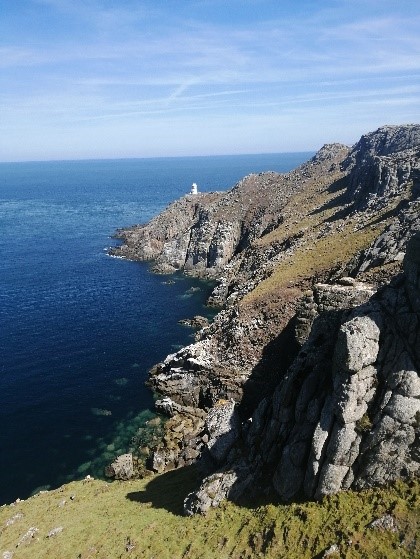
Hannah and Summer, of DASSH, were on Lundy island as part of the Marine Bioblitz that took place in July. During the Bioblitz, 74 species were observed as part of the iNaturalist project. iNaturalist is an innovative, user-friendly app which uses AI technology to suggest the closest matching species or taxon to a photograph taken by users. Users can join a project and contribute any sightings by taking a photo and recording the location. As the app very intuitive, anyone is able to use it, including citizen scientists.
DASSH created the Lundy Bioblitz project on iNaturalist, and both Hannah and Summer were on hand to help with its use and setup. All of this data, along with paper records, will eventually be collated into one data set and published via MEDIN (Marine Environmental Data and Information Network).
“A personal highlight was seeing hundreds of puffins off of Lundy, which was beautiful. A rare sight, at least for me!”
Summer Grundy
As part of the Lundy Marine Festival, Keith Hiscock gave a talk on the history of Lundy’s Marine Protected Area, which celebrated 50 years in 2022. Keith, who also spoke about the MPA’s wildlife, first dived in Lundy in 1969. It was around this time that he persuaded Founder and Landmark Trust Director John Smith to create an MPA on Lundy. Keith still plays active role in the MPA, having been Chair of the Advisory Group since 2001.
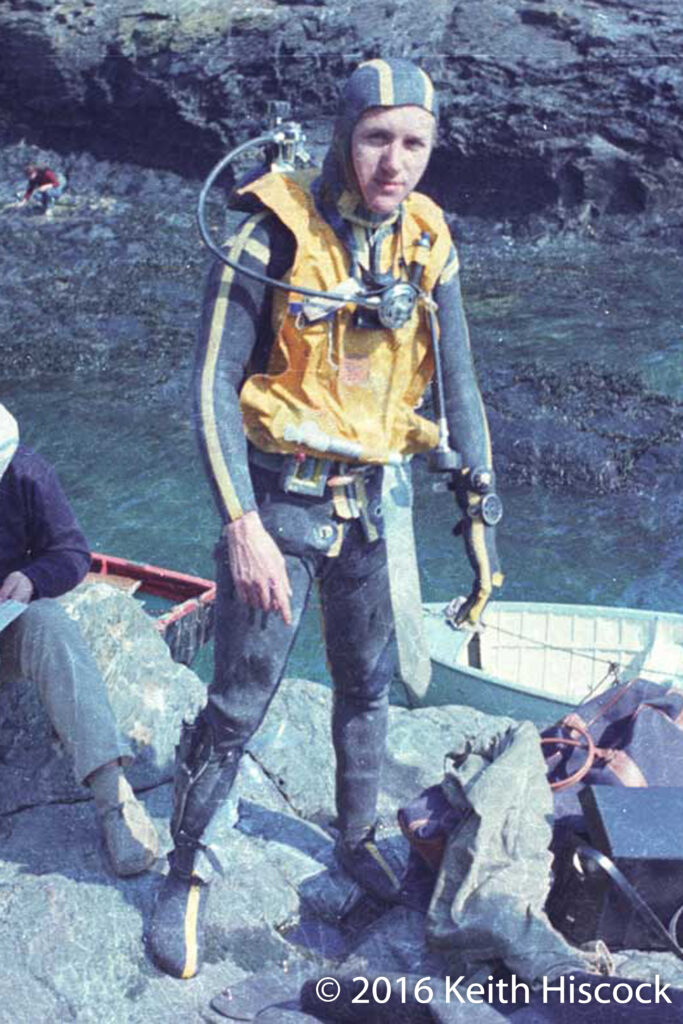

Keith Hiscock in 1969, and in 2021.
Meanwhile, Patrick Adkins, Joanna Harley and volunteer Michael Cooper were on the island to help with the Bioblitz and collect species for the Darwin Tree of Life (DToL) project, alongside the Porcupine Marine Natural History Society and members of the Natural History Museum’s DToL team.
A typical day for the DToL team meant waking early and commencing laboratory work from 7am – 12pm. Lab work entailed identifying and processing the organisms collected the previous day. St Helen’s, the only church on Lundy, was kindly turned into a lab space for the duration of Patrick, Joanna and Michael’s stay.
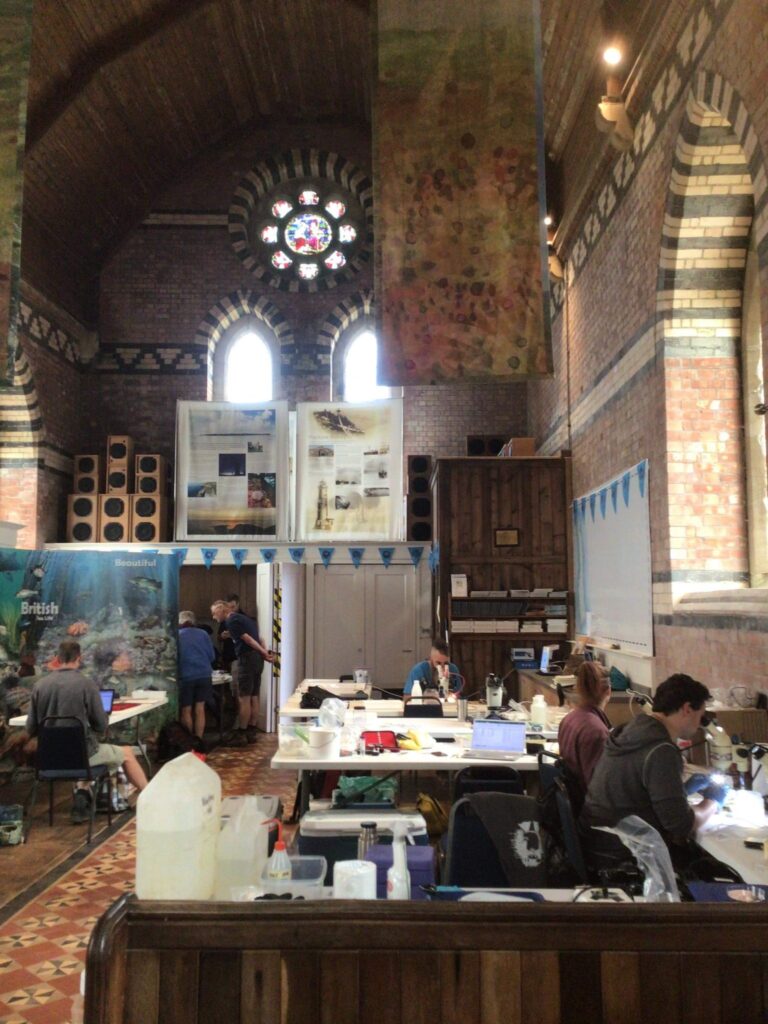
By midday, the team would head to the shore and commence species collection until 4pm. Back at St Helen’s, the team processed the samples until 10-11pm when the island’s electricity was turned off. Overall, 59 species were collected and processed for the Darwin Tree of Life.
There were many highlights for the MBA’s DToL team while collecting species on Lundy.
Seeing that access to the secluded Lametry Bay meant traversing a cliff face by rope, the team found an alternate route through a beautiful sea cave covered in beadlet anemones, pink coralline algae and multiple cave snails which, of course, were collected for the project.
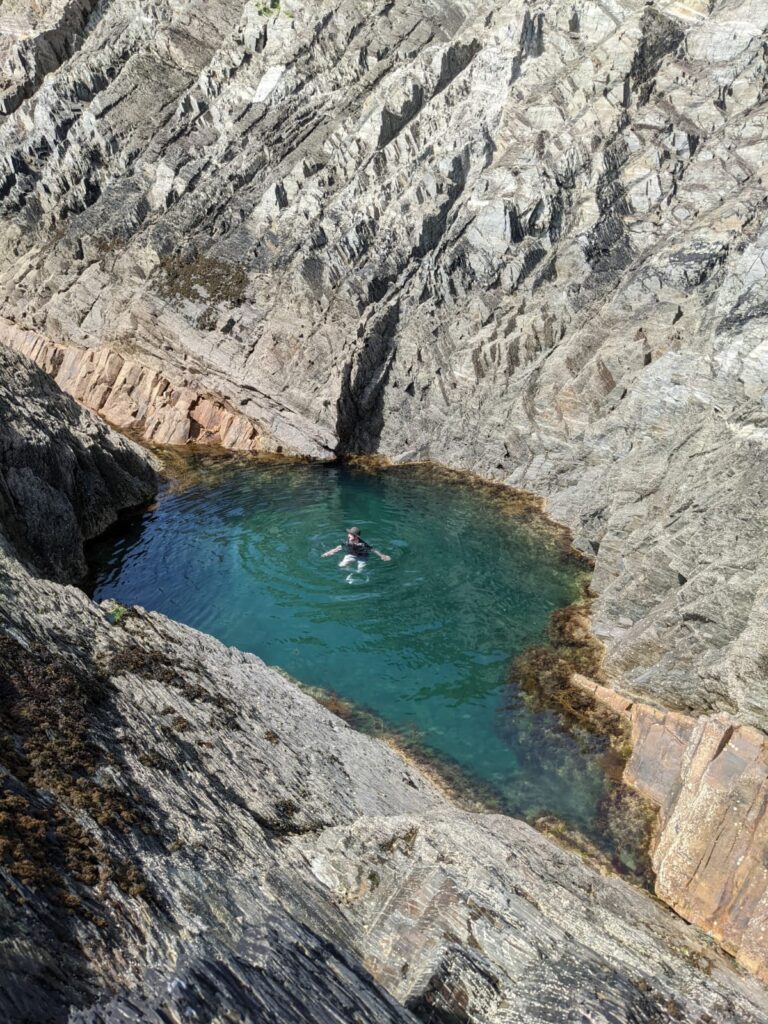
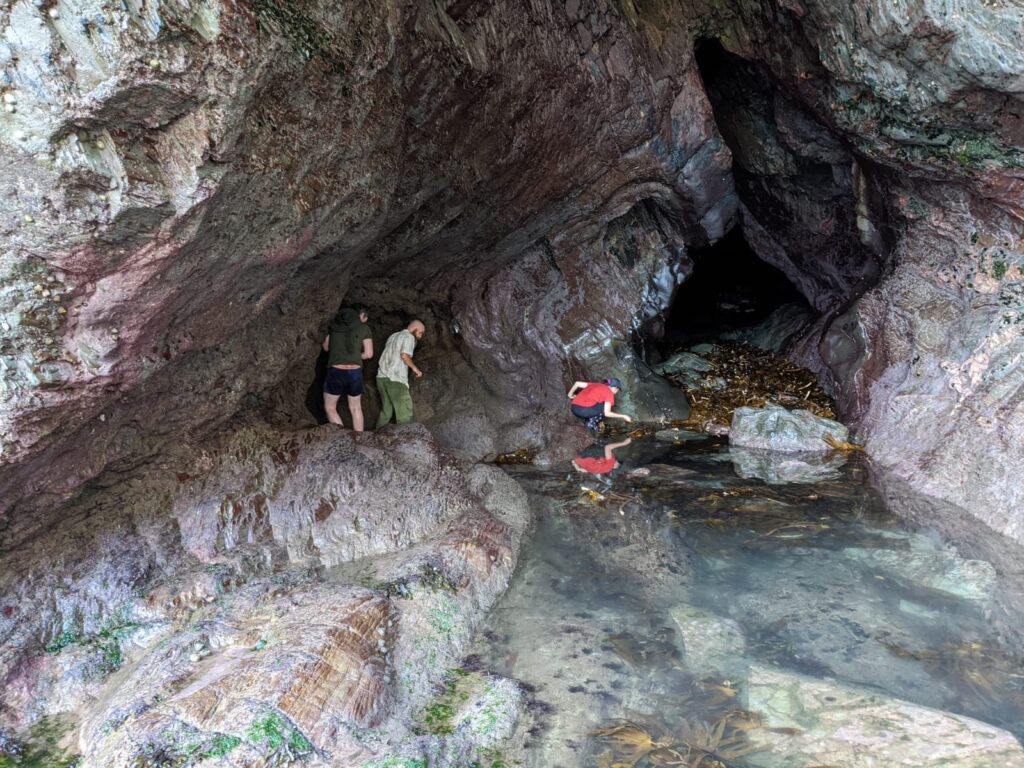
Patrick Adkins scouting samples, and the DToL teams from the MBA and Natural History museum collecting samples to take back to the lab.
At every shore site, a constant companion of the team were grey seals, which were often heard “singing” while traps were set to collect species. Always curious, the seals on Lundy are a common site for visitors.
One particular highlight for Patrick Adkins was the accidental finding of Lamellaria perspicua living on a Didemnum.
“It was so well camouflaged that we didn’t notice it until I thought a bit of our sample was crawling way.”
The small species of mollusc had disguised itself as a Didemnum, even replicating the siphons of the colony, and appeared to be a very unusual colour morph, matching almost perfectly the bright orange Didemnum.
“It was an absolute pleasure to spend the week on such a beautiful island, especially to celebrate 50 years of the Lundy MPA. It’s a pleasure also to work with the Porcupine Society, and share in their enthusiasm and knowledge of the marine environment.”
Patrick Adkins
DASSH and DToL wish to thank the organisers and supporters of Lundy Marine Festival.